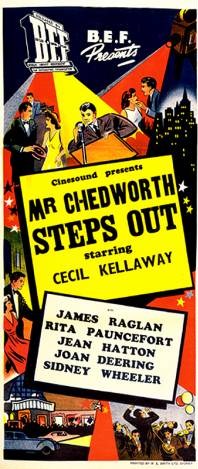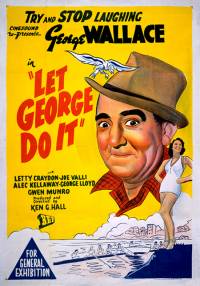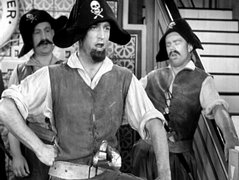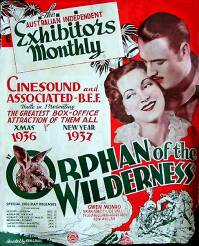
Kenneth George Hall was an Australian film producer and director, considered one of the most important figures in the history of the Australian film industry. He was the first Australian to win an Academy Award.

Cinesound Productions Pty Ltd was an Australian feature film production company. Established in June 1931, Cinesound developed out of a group of companies centred on Greater Union Theatres that covered all facets of the film process, from production to distribution and exhibition. Cinesound Productions established a film studio as a subsidiary of Greater Union Theatres Pty Ltd based on the Hollywood model. The first production was On Our Selection (1932), which was an enormous financial success.

Mr. Chedworth Steps Out is a 1939 Australian comedy film directed by Ken G. Hall starring Cecil Kellaway. Kellaway returned to Australia from Hollywood to make the film, which features an early screen appearance by Peter Finch.

The Broken Melody is a 1938 Australian drama film directed by Ken G. Hall and starring Lloyd Hughes, based on a best-selling novel by F. J. Thwaites. Hall later said in 1974 that "This was a film that I’m particularly keen about still."
Edmond Seward was a Hollywood screenwriter who had originally attended Northwestern University and worked as a journalist, before doing some writing for Disney.

Strike Me Lucky is a 1934 Australian comedy musical film starring popular stage comic vaudevillian Roy Rene in his first and only film. It was the fourth feature film from Cinesound Productions but proved a box office disappointment. Director Ken G. Hall claimed it was the only one of his features not to go into profit within a few years of release, although the film eventually covered costs.

Grandad Rudd is a 1935 comedy featuring the Dad and Dave characters created by Steele Rudd and based on a play by Rudd. It was a sequel to On Our Selection, and was later followed by Dad and Dave Come to Town and Dad Rudd, MP.

Thoroughbred is a 1936 Australian race-horse drama film directed by Ken G. Hall, partly based on the life and career of Phar Lap. Hollywood star Helen Twelvetrees was imported to Australia to appear in the film. The film also stars Frank Leighton and John Longden.
It Isn't Done is a 1937 Australian comedy film about a grazier who inherits a barony in England.

Lovers and Luggers is a 1937 Australian film directed by Ken G. Hall. It is an adventure melodrama about a pianist who goes to Thursday Island to retrieve a valuable pearl.
Tall Timbers is a 1937 action melodrama set in the timber industry directed by Ken G. Hall and starring Frank Leighton and Shirley Ann Richards.

Let George Do It is a 1938 comedy starring popular stage comedian George Wallace. It was the first of two films Wallace made for Ken G. Hall at Cinesound Productions, the other one being Gone to the Dogs (1939). Hall later called Wallace "in my opinion, easily the best comedian that this country has produced."
Gone to the Dogs is a 1939 musical comedy vehicle starring George Wallace. It was the second of two films he made for director Ken G. Hall, the first being Let George Do It (1938).

Dad Rudd, M.P. is a 1940 comedy that was the last of four films made by Ken G. Hall starring Bert Bailey as Dad Rudd. It was the last feature film directed by Hall prior to the war and the last made by Cinesound Productions, Bert Bailey and Frank Harvey.
Come Up Smiling is a 1939 Australian comedy film starring popular American stage comedian Will Mahoney and his wife Evie Hayes. It was the only feature from Cinesound Productions not directed by Ken G. Hall.
Typhoon Treasure is a 1938 Australian adventure film directed by Noel Monkman and starring Campbell Copelin, Gwen Munro, and Joe Valli. It is set in New Guinea although shot on the Great Barrier Reef and the Queensland coast. It was Monkman's first dramatic feature film after several years making documentaries.
Gwendolyn Mina Munro was an Australian actress best known for playing the female lead in Orphan of the Wilderness (1936).
Alec Kellaway was a South African–born actor best known for his work in Australian theatre and film, notably playing a number of character roles for director Ken G. Hall. He was the brother of Cecil Kellaway. He also worked as a producer in vaudeville and helped run the Talent School at Cinesound Productions.

Cinesound Varieties is a 1934 Australian variety short film from director Ken G. Hall made to go out on a double-bill with the full-length feature, The Silence of Dean Maitland (1934). Only 18 minutes of the film survive today.
Pagewood Studios was a film studio in Sydney, Australia, that was used to make Australian, British and Hollywood films for 20 years.











